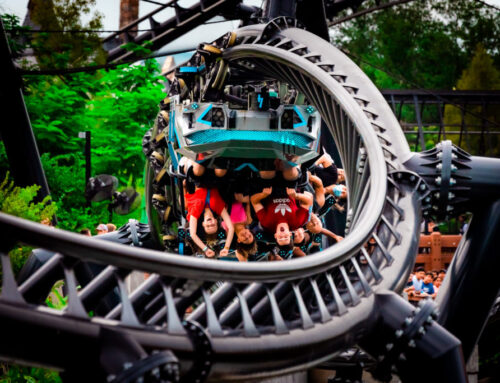When I was a kid, I collected coins.
The hobby was probably originally inspired by the State Quarters that were all the rage when I was growing up… I mean everyone collected THOSE… EVERYONE had those neat little folders where you popped in each State Quarter as they were released one by one… that was great n’ all.
…But I’m sort of an intense person, so naturally… I took coin collecting to a whole other level.
The technical term for this would be that I became a “numismatist.”
I know. Pretty nerdy…
Part of being a numismatist — a real deal, serious coin collector — was to learn how to “grade” the condition of coins… meaning, how well preserved they were, how crisp and distinguishable the details still were:
The scale went from Poor…to Fair…to About Good, to Good, to Very Good, to Fine, to Very Fine, to Good Very Fine, to Extremely Fine, to Choice Extremely Fine, to About Uncirculated, to Good About Uncirculated, to Choice About Uncirculated, and then finally… Mint State.
Mint State was obviously the best…. Mint state coins look brand new. As if they are just fresh off the press.
The more wear and tear, the more worn down the image on the coin becomes… the lower the “grade” you give it. Some coins I had were virtually unrecognizable. You could barely see the image that used to be boldly stamped into the metal when it was brand new. It had been used so often, passed through so many hands, used in so many bubblegum machines… that the image had almost completely disappeared!
But it was still there.
In our Gospel today, the Pharisees and Herodians try to trap Jesus in a question about whether it’s lawful to pay tax to the Caesar… to the Roman authorities. And Jesus replies in a surprising fashion, asking them to show him a Roman coin:
“Whose image is this and whose inscription?” he asks. Do you recognize it? Can you see it on the coin? Has it worn off? Or can you tell me: Whose likeness do you see stamped into this coin?
The answer, of course, is easy. “Caesar’s.” The image is still fresh. It’s clear. …Perhaps even Mint Condition!
Jesus then gives his classic answer: “Then repay to Caesar what belongs to Caesar and to God what belongs to God.”
It’s a brilliant move that allows Jesus to both affirm the legitimate authority of the secular state, while also making it quite clear that God is actually the one ultimately in charge. That even Caesar — master of the entire ancient world — is still totally subject to Divine Providence.
This is the message of our first reading today, from the prophet Isaiah, as well. There we hear that Cyrus, ruler of Persia, and all his political maneuvers, are somehow still part of God’s providential plan. No king, queen, prime minister, or president — whether they be the kindest ruler or harshest tyrant — can throw off or disrupt the plans of Heaven. Their every move has been accounted for, and the Lord can bring great good out of anything and everything!
As God Himself says in that first reading: “I AM the LORD, there is no other, there is no God besides me.”
But let’s back up just a bit. Because when Jesus asks the Pharisees and Herodians: “Whose image is this?” …he uses an important biblical term.
He uses the Greek word for “icon.” “Whose “icon” is this on the coin?”
This is the same word used way back in the book of Genesis — when we find out that God “created man in His own image and likeness.” His own “icon!”
The “imago dei.” Image of God. The very stamp of God pressed into the “coin” of humanity — man and woman — freshly minted. This is the crowning masterpiece of God’s good creation!
And just as the image of Caesar meant that the coin rightfully belonged to Caesar, this deeper image, this DIVINE image imprinted into human nature means that we all belong to God.
Every human person, regardless of their beliefs, their history, their sins, their race, their culture, their self-identification… EVERY person has this Divine image pressed deeply into their being.
And it can never be lost.
It can never be taken away.
It can never be totally worn down.
It’s always still there… still recognizable! Still sacred!
This is why every person is so sacred. This is why every life matters, whether that life be in the womb or on a death bed. This is why hating any other human being is such a disastrous and monstrous thing — What we hate is the very image of God that can never be lost!
That striking verse from the First Letter of Saint John comes to mind here: “If any one says, ‘I love God,’ and hates his brother, he is a liar; for he who does not love his brother whom he has seen, cannot love God whom he has not seen.”
In a real but mysterious way — We’ve seen God.
We’ve seen His image! …We’ve seen His “icon” — stamped into every human being we’ve ever casually walked by, cut off in traffic, argued with, insulted, cheated, lied to, gossiped about…
As CS Lewis once said: “There are no ordinary people. You have never talked to a mere mortal.”
This is why our hearts ought to ache for ALL the people involved in the bloody violence in the Holy Land right now, and in so many other parts of the world! In our own backyard! In our neighborhood!
This world is so wounded… people are being trampled, used, discriminated against, abused, and damaged left and right. The image of God is being beat up, slandered, persecuted and attacked!
What can be done? How should Catholics respond?
As always, the ultimate answer is holiness.
Our best answer to all the brokenness of our world — the pain and dysfunction, the evil and terror — is holiness. To conform our lives more and more to the life of Jesus.
He is Himself the perfect Image of the Invisible God. So our lives need to progressively look more and more like HIS if we ever want to bring hope and healing into our world.
Saint Augustine once said in a homily that while we’ve all been created equally in the image of God, this image needs to be “progressively sculpted afresh.”
As he explains it, the image of God, while never disappearing completely, can get sort of “worn down.” How does it get worn down? By being “rubbed on the earth,” he says. What does that mean, ‘rubbed on the earth?’ It is “rubbed by earthly desires”…and so “It is by loving the truth that the image of God by which we were created is sculpted anew.”
In other words, by growing in holiness! By continually repenting of sin… By being sculpted by the liturgy and the sacraments… By deepening our love for the Truth, our love for Jesus — we become more and more “distinguishable”— clearly defined as the living image of God in this world.
We can go from Poor Condition right back to Mint Condition!
The temptation, of course, is to dismiss the pursuit of holiness as unrealistic or impractical… “No,” we might say. “We need something more applicable, something more serious if we REALLY want to change the world and bring about justice!”
And so we can try throwing all our efforts into political activism instead.
But history is littered with countless examples of bleary-eyed idealists who firmly believed that if we only tried a little harder, built a different political system, got a bigger majority, captured more of the votes, squelched more of the dissenters, and (more often than not) eliminated all the undesirables… THEN… THEN we’d finally have a perfect world!!!
THEN finally, we’d have heaven on earth! …A man-made paradise!
Pope St. John Paul II, whose feast day would be today if it wasn’t a Sunday, experienced firsthand the horrific effects of tyrannical governments that really truly believed all these lies. The Nazis and then the Communists actually believed that they could bring about worldly perfection… they just had to crack a couple of eggs along the way! Unfortunately, this meant violating the dignity of the human person — Concentration camps. Thought-police. Massive wars. Destruction of art, architecture, music and culture… and so many more atrocities.
This is what the misguided quest for utopia ultimately gets us.
From these painful experiences, Pope St. John Paul II learned all too well that in the end — We don’t belong to Caesar. Politics is not our God. Politics cannot save us. No politician will ever be able to fix the human problem of Sin. Donkey or elephant. Blue state or red state. It will all pass away. Politics… while necessary and (at its best) a force to help pursue the Common Good… will never fully heal the world.
But holiness can.
Living out the image of God imprinted in our being — body and soul — can transform the culture.
And as Pope St. John Paul II himself said so well: “True holiness does not mean a flight from the world; rather, it lies in the effort to incarnate the Gospel in everyday life, in the family, at school and at work, and in social and political involvement.”
We certainly live in a volatile moment in history. Wars are raging, and the threat of more and more instability and unrest seems to loom over us.
We cannot let these threats deter us from pressing deeper and deeper into God, of falling more in love with Him, and growing in holiness.
Of becoming more and more clearly the living breathing image of God in this world — helping the people around us to see along the way that they too are made in God’s image.
That they, too, belong to God.
Now more than ever, we need to support one another as brothers and sisters in Christ to live out our Catholic identity in the world, here and now! We need to LIVE the icon that is stamped into us!
We ought to be distinguishable and recognizable from our non-Catholic and non-believing neighbors. We need to be willing to look WEIRD…to be RADICAL! To live DIFFERENTLY. To know what’s going on in our world, but without being manipulated and desensitized. To do politics differently. To give our money to charitable causes differently. To serve the vulnerable around us differently. To stand up for the Truth differently. To be in the world, but not of it.
To be HOLY as God is holy.




